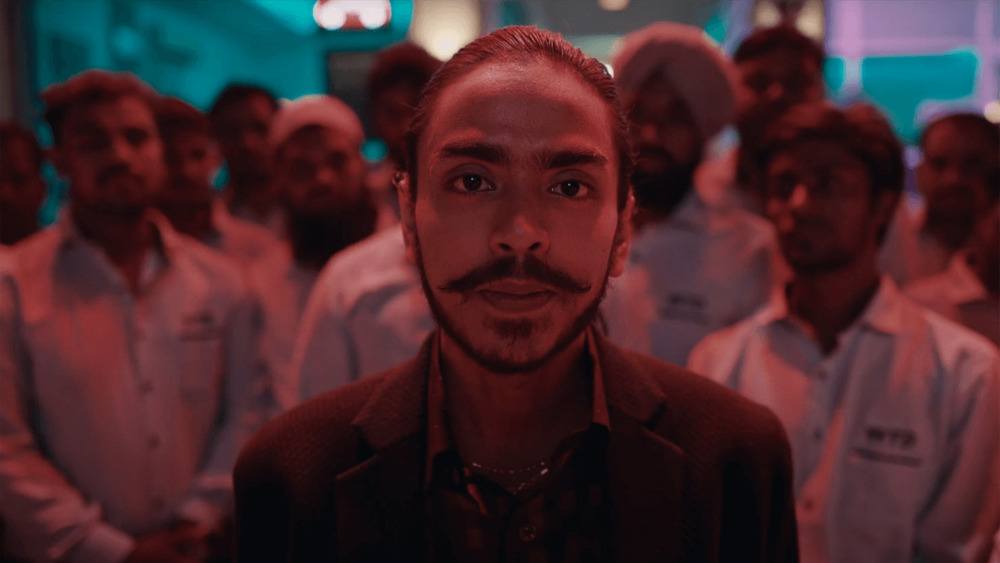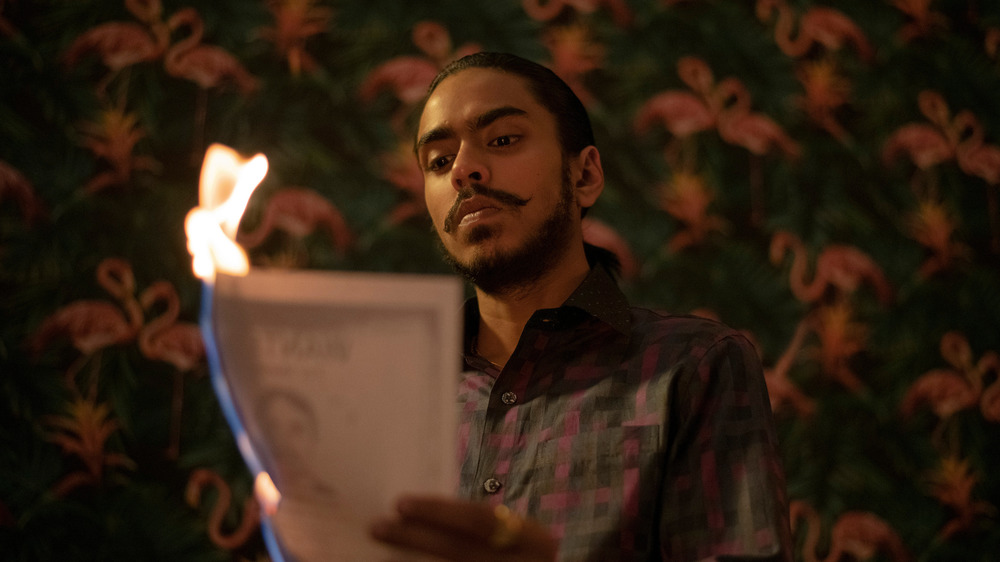The Ending Of The White Tiger Explained
The long-awaited adaptation of The White Tiger has finally dropped on Netflix, and the subversive best-selling tale of one man's confrontation with the corruption of classism has won over both critics and audiences.
Earning a 90% critics score on Rotten Tomatoes and an 83% audience score, The White Tiger chronicles India's grisly caste system and one taxi driver's ambitious — and deadly — rise within it during the 2000s. Ramin Bahrani — who Indian author Aravind Adiga dedicated his debut novel to — serves as the director of this dark, satirical story centered on Balram (Adarsh Gourav), an entrepreneur and owner of a Bangalore car service with a bounty on his head. Serving as both the film's central character and narrator, Balram is joined by his privileged and wealthy former employer Ashok (Rajkummar Rao) and his beautiful wife Pinky, played by actress and the film's executive producer Priyanka Chopra Jonas, in a non-linear tale told by way of emails from Balram to the then–Chinese premier Wen Jiabao.
Going from the vast and consuming poverty of his upbringing, a situation he calls "The Darkness," Balram details his grand and aggressive journey out of the destitution and misery of his father's life and into something more violently grand. Moving to the city, he takes a job as a driver working for a family of a prominent landowner, first humbly refusing to be paid with anything but the honor of working for such a respected household. Eventually, after getting the head driver fired, the cunning Balram takes his place and begins to strategically insert himself into their lives.
Balram forms a somewhat tenuous relationship with his employers Ashok — the family's U.S.-educated son — and his wife, Pinky. They are privileged — selfish and condescending — but also slightly more "enlightened" about class cruelty in their country. They "feel" for Balram, but with pity instead of empathy, a reality that becomes painfully clear when the couple's recklessness sees their driver taking the fall for a murder.
But that's only the beginning of The White Tiger's twists. Here's the film's ending, explained.
Balram is convinced to take the fall for a murder committed by his privileged employers
Within the Netflix film's narrative runs the story of a chosen one — a White Tiger — who is only born once every generation. There is also "the Lamb," an unknowing sacrifice — the title given to Ashok, a Stork, a Mongoose. These are essentially qualifiers for the kinds of people that exist in the world of privilege Balram now serves. The meaning of those labels becomes clearer as the film's end approaches. That's around when Balram chooses to buck his servitude and become the legendary White Tiger.
Despite Balram being Pinky and Ashok's driver, one night after a party, the two demand he hands them the keys. While joy-riding through the city with a drunk Pinky at the wheel, the car hits someone, killing them. One night, after a party, Pinky takes the steering wheel in a drunk state and tells Balram to sit in the backseat. Making their way through the desolated streets, Pinky and Ashok sing and crack jokes until she crashes into a poor man. To cover up her crime, the two blamed Balram, with Ashok's family also agreeing that he must take the fall. It enrages the man, pushing him to give up his stick and enact his own version of revenge, starting to steal from the family.
After signing a confession without asking for anything in return and thereafter still being degraded by the family he worked for, Balram makes a choice. Believing that there are only two ways for a poor man like him to rise through the caste system — crime and politics — he relinquishes his "subservience" and begins a plot to take down his master.
Balram turns against his mindset of survitude and the cruelty of the upper class
That plot is fueled by two things — first, Balram's knowledge that Ashok is looking to replace Balram. Second, another corruption effort led by Ashok's father, who is plotting against the Chief Minister (Swaroop Sampat) after she threatens him. Ashok, his brothers, Pinky, and Balram, go to the central government's top political leaders prepared to buy their favor. The cash is stashed in a red bag that, when at one point left with Balram, he opens up. It is then that he sees his chance to rise from his position, and he begins to observe his master and his maneuvers.
Finally, as Ashok prepares to hand over a bag with four million rupees in cash, Balram hatches his plan. After hiding a broken whiskey bottle in the car, he drives out to an isolated location, feigns an issue with the tires, and then uses the bottle to murder Ashok before fleeing with the money. Later, thanks to a message to Wen Jiabao, it's heavily implied that Balram's family has paid the price for his actions with their own lives. But he's now shirked his responsibilities to his old life. In his mind, they very well may have been a necessary sacrifice for his caged white tiger to be free. While Balram has reservations and guilt about killing Ashok, he has no shame in doing what he had to do to break his caste chains.
As audiences journey back to the present, they see Balram with his taxi company, White Tiger Drivers. Cast against the background of "The Great Socialist" leadership of India that laid the groundwork for his impoverishment and his dark rise through the caste system, he's taken on a capitalist approach to his business, indulging in corruption to take down his competitors. He aims to provide for and protect his workers in the way he wasn't. "It's the century of the brown man and the yellow man, and God save everybody else," he says, after a conversation with Wen Jiabao where he reveals plans to move into the real estate.
The White Tiger is a class tale that is still relevant in India and beyond
Much like the ending of the Oscar-winning Parasite, The White Tiger takes a hard look at how politics, business, greed, class, and corruption work every day in tandem to create a system where millions — oftentimes hundreds of millions — must literally fight to the death to stay alive. While Balram's story was fueled largely by his ambition and contempt, those were both born out of his destitute condition. His violence — against members of his own community and those who maintain and benefit from the deadly caste system — was a fight of the masses.
"People feel like they are not being paid attention to, that they are being left behind, that they're being mistreated because of how they look or where they come from, or what class they were born into," director Ramin Bahrani told The Wall Street Journal about why Balram's story might resonate with people now. "And they don't feel like they have a fair chance to make it in a society that doesn't seem to be structured to give them a fair shot at life."
In a separate interview with NPR, Bahrani discussed the film's caged tiger and rooster coop references, in which animals who are trapped in cages don't fight them, and even in the case of chickens, don't "rise up" against the butchers who kill those around them and then eventually them.
"The main character feels that the servant class in his country has been trained to behave this way, that the poor in the world really have been trained by the rich that that is their lot in life," Bahrani said. "But I think in a way, the film is saying something else by the end of this character's journey, that if you just put your hand in your pocket, you will discover a key. And it could open a door and lead you to a new chance, a chance to achieve your full potential as a human being."



